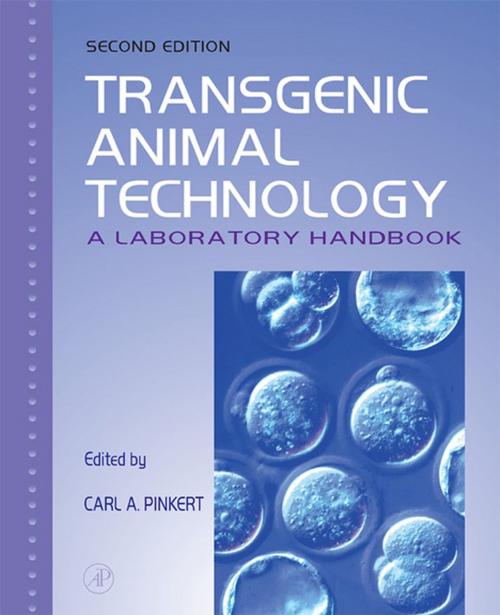Transgenic Animal Technology
A Laboratory Handbook
Nonfiction, Science & Nature, Science, Biological Sciences, Genetics, Zoology| Author: | Carl A. Pinkert | ISBN: | 9780080574806 |
| Publisher: | Elsevier Science | Publication: | December 2, 2012 |
| Imprint: | Academic Press | Language: | English |
| Author: | Carl A. Pinkert |
| ISBN: | 9780080574806 |
| Publisher: | Elsevier Science |
| Publication: | December 2, 2012 |
| Imprint: | Academic Press |
| Language: | English |
A transgenic animal is one that is genetically modified to carry genes from another species. Transgenic species can be raised to carry potentially useful genes from a variety of species. While the topics of genetic engineering and cloning are controversial, the reality is that these technologies offer tremendous benefits to society - from offering a framework for developing and screening medical therapies, to enhancing the safety and nutrition of the food we eat.
One potential application of research into transgenic animal technology is the creation of domestic animals genetically designed to express a certain human disease and therefore serve as models for the study and treatment of human illnesses. Although many mouse models of human diseases are available today, such models in large domestic animals physiologically more similar to humans are sparse and critically needed. Further research in this field will undoubtedly uncover many more direct and indirect benefits of this technology.
Transgenic animal technologies and the ability to introduce functional genes into animals have revolutionized our ability to address complex biomedical and biological questions. This well-illustrated handbook covers the technical aspects of gene transfer — from molecular methods to whole animal considerations — for important laboratory and domestic animal species. It describes methodologies as employed by leading laboratories and is a key resource for researchers, as well as a tool for training technicians and students. This second edition incorporates updates on a variety of genetic engineering technologies ranging from microinjection and ES cell transfer to nuclear transfer in a broad range of animal modeling systems.
- Contains a comprehensive collection of transgenic animal and gene transfer methods
- Discusses background and introduction to techniques and animal systems
- Teaches practical step-by-step protocols
- New section on analysis
A transgenic animal is one that is genetically modified to carry genes from another species. Transgenic species can be raised to carry potentially useful genes from a variety of species. While the topics of genetic engineering and cloning are controversial, the reality is that these technologies offer tremendous benefits to society - from offering a framework for developing and screening medical therapies, to enhancing the safety and nutrition of the food we eat.
One potential application of research into transgenic animal technology is the creation of domestic animals genetically designed to express a certain human disease and therefore serve as models for the study and treatment of human illnesses. Although many mouse models of human diseases are available today, such models in large domestic animals physiologically more similar to humans are sparse and critically needed. Further research in this field will undoubtedly uncover many more direct and indirect benefits of this technology.
Transgenic animal technologies and the ability to introduce functional genes into animals have revolutionized our ability to address complex biomedical and biological questions. This well-illustrated handbook covers the technical aspects of gene transfer — from molecular methods to whole animal considerations — for important laboratory and domestic animal species. It describes methodologies as employed by leading laboratories and is a key resource for researchers, as well as a tool for training technicians and students. This second edition incorporates updates on a variety of genetic engineering technologies ranging from microinjection and ES cell transfer to nuclear transfer in a broad range of animal modeling systems.
- Contains a comprehensive collection of transgenic animal and gene transfer methods
- Discusses background and introduction to techniques and animal systems
- Teaches practical step-by-step protocols
- New section on analysis















